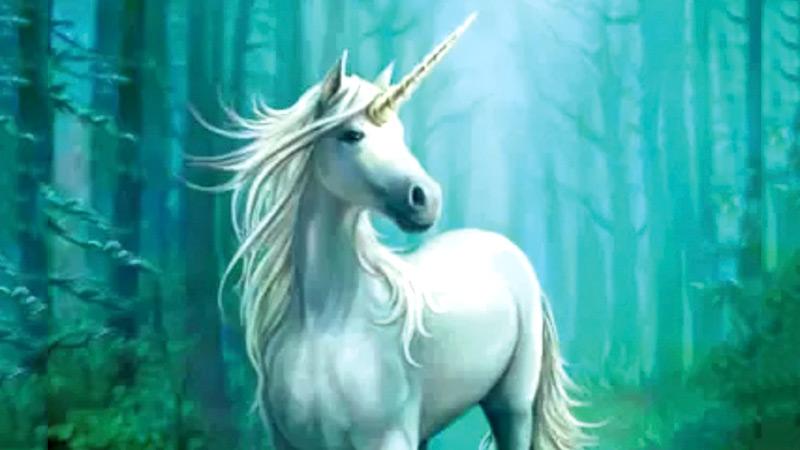
The unicorn, which entered the world through various forms of mythology for many centuries, became more popular in recent history with the series of Harry Potter books.
The lovely image of the soft-coloured unicorns that flourish in the mythical world with water lilies and dragons, can be seen in medieval oil paintings as well as in picture story books written for children. Thus, the story of the unicorn, which is familiar to everyone, getting in the mythical literature is also fascinating.
Early Mesopotamian paintings, as well as popular legends in India and China, include information about unicorns. But the oldest document describing the form of a unicorn belongs to the 4th century BC. Theseus, a Greek physician and historian, has written it based on the facts he heard from traders from the East.
India
He has said that there are wild donkeys in India that are larger than a horse with a smooth body, dark red or purple head and blue eyes.
Also, he has written that on the forehead of these magnificent creatures, there is a horn with a red top, a black middle part and a white beginning, about a foot in size.
 According to Chinese legend, a unicorn, an animal that brings good luck, has horns about 12 feet long and its body is covered with a fur coat of the five sacred colours of black, red, ching (a mixture of green and blue), white and yellow. In the same way, although it is mentioned in many books that a unicorn is the same size as a horse, in Physiologus, an ancient Greek collection of stories, it is mentioned that a unicorn, which is a very small animal, is the same size as a goat.
According to Chinese legend, a unicorn, an animal that brings good luck, has horns about 12 feet long and its body is covered with a fur coat of the five sacred colours of black, red, ching (a mixture of green and blue), white and yellow. In the same way, although it is mentioned in many books that a unicorn is the same size as a horse, in Physiologus, an ancient Greek collection of stories, it is mentioned that a unicorn, which is a very small animal, is the same size as a goat.
It is not wrong to say that many of the legends about unicorns are based on information provided by traveling traders from the East.
Even famous people like Aristotle, Julius Caesar, and Marco Polo have discussed unicorns in their notes using such information. Likewise, archaeologists believe that the animal named ‘Ream’, mentioned in the Old Testament of the Bible, may have made a great contribution to the popularisation of stories about unicorns among the people.
In many works of art, unicorns are depicted in white, symbolising purity. Although they are seen as good creatures in some sources, according to some books unicorns, who are proud of their appearance, spend most of their day in front of a mirror made of silver to admire their appearance. Also, it is extremely difficult to capture them, which are powerful and untamed.
Maiden
According to legend, a trap should be made to catch a unicorn and the help of a maiden is essential for that. Accordingly, the first work to be done is to find a forest where unicorns live or are believed to live. After that, the maiden who hopes to tame the unicorn has to stay near a tree or a fallen log and wait for the animal in question to come. According to folklore, only a virtuous girl has the ability to attract a unicorn, a symbol of purity.
For centuries, the horn of the unicorn has been considered a valuable object. As mentioned in the legend, the horn of a unicorn with magical powers has the ability to purify water. Also, when poison is ingested, the horn is able to neutralise it.
Due to this, it is seen in history that many ancient kings tried to possess a unicorn horn. Likewise, people who lived a few centuries ago believed that it is possible to cure diseases by using the horn of a unicorn.
Legend has it that King James I of England, who believed that the horn of the unicorn had a special ability to absorb poison, even made one of his servants to drink a pot of poison.
Also, even in the 17th century, it is said that many medicines were sold that were said to be prepared using the horn of the unicorn in many European countries. Newspaper advertisements have even appeared stating that these medicines can cure diseases like measles, German measles, fever and muscle pains.
Even though it has been confirmed that unicorns are just a mythical creature, there are still people who hunt for them.
Environmentalists say that poaching of rhinos, mistaken for unicorns, has been a major cause of the extinction of the world’s rhino population, but research has revealed that the horn of rhinoceroses is not a real horn, but a capillary tissue that takes the form of a horn.
